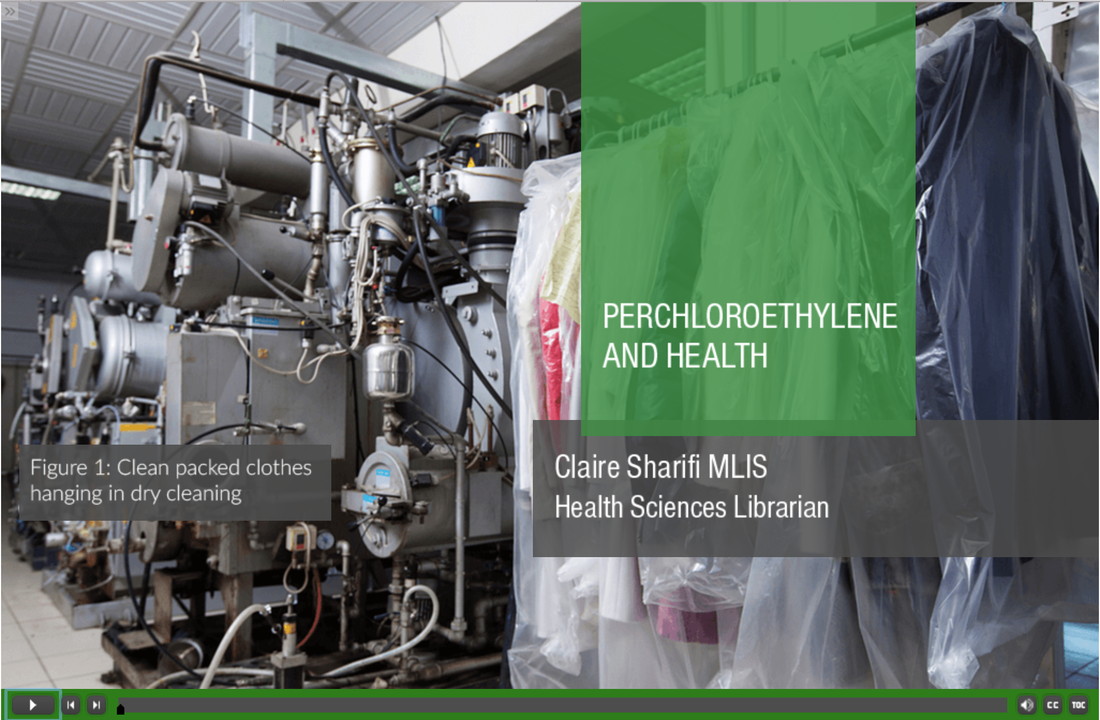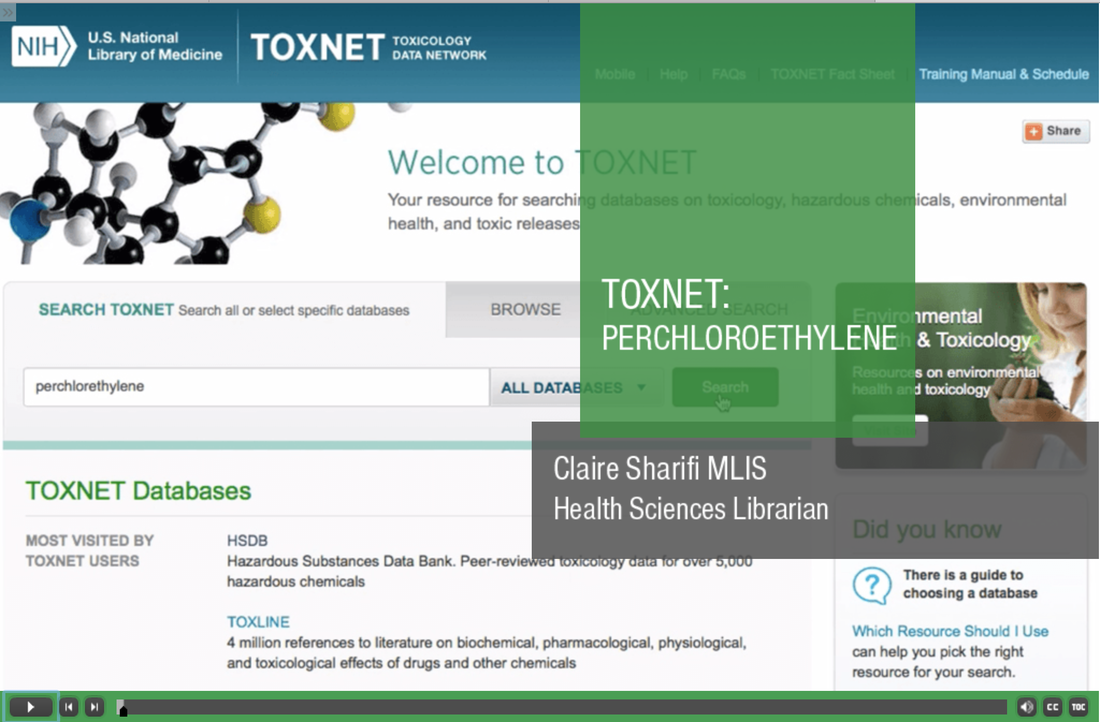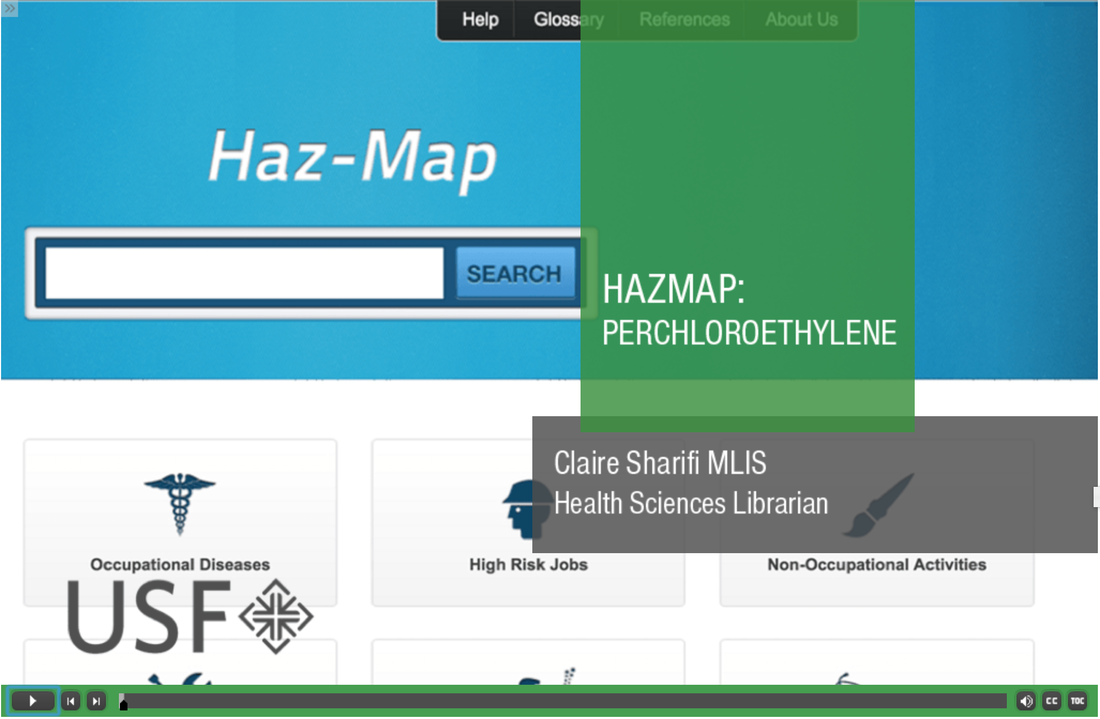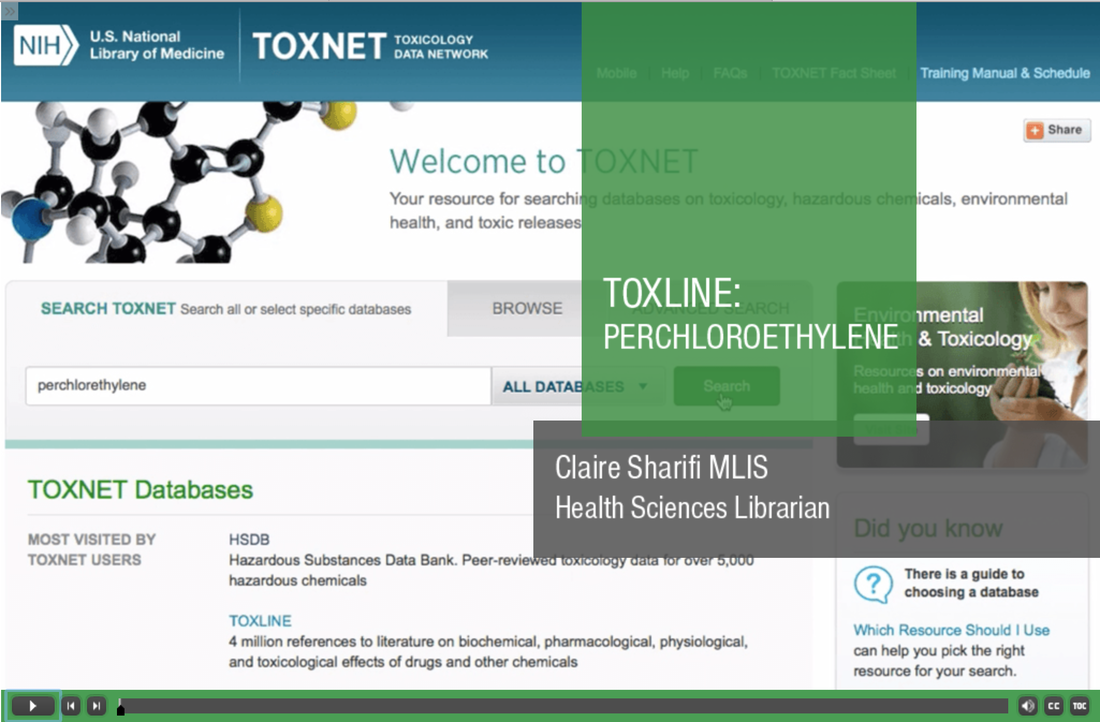Perchloroethylene and Health
|
This lecture introduces viewers to perchloroethylene, a chemical commonly used in dry-cleaning, and health concerns associated with exposure to perchloroethylene. Additionally, this lecture provides information on sources of perchloroethylene exposure, health implications of perchloroethylene exposure, populations at risk of perchloroethylene exposure, as well as exposure effects across the lifespan. With over 30,000 dry cleaning operations in the United States, there is the potential for occupational and residential exposures to perchloroethylene.
|
SCREENCASTS
This lecture provides instruction on using National Library of Medicine resources to find information on the chemical perchloroethylene and health effects of exposure to perchloroethylene. Specifically, this lecture introduces viewers to TOXNET, Toxline, and HazMap. Specific resources discussed include TOXNET, Haz-Map, and Toxline.
RESOURCES
NIOSH Pocket Guide to Chemical Hazards, Tetrachloroethylene: http://www.cdc.gov/niosh/npg/npgd0599.html
From The National Institute for Occupational Safety and Health (NIOSH). The NIOSH Pocket Guide to Chemical Hazards provides industrial hygiene information for workers, employers, and occupational health professionals.
Tox Town Perchlorethylene: https://toxtown.nlm.nih.gov/text_version/chemicals.php?id=22
National Library of Medicine. Consumer/patient health information on Perchloroethylene from Tox Town.
OSHA Dry cleaning safety: https://www.osha.gov/SLTC/drycleaning/
From United States Department of Labor, Occupational Safety & Health Administration. General information on dry cleaning safety for employees, includes guidance on reducing perc exposure for employees.
OSHA Toolkit for transitioning to safer chemicals: https://www.osha.gov/dsg/safer_chemicals/index.html
From United States Department of Labor, Occupational Safety & Health Administration. A toolkit for employers and workers on transitioning to safer chemicals.
Basic information on “green” dry cleaning options http://www.treehugger.com/style/are-there-green-dry-cleaners.html
From The National Institute for Occupational Safety and Health (NIOSH). The NIOSH Pocket Guide to Chemical Hazards provides industrial hygiene information for workers, employers, and occupational health professionals.
Tox Town Perchlorethylene: https://toxtown.nlm.nih.gov/text_version/chemicals.php?id=22
National Library of Medicine. Consumer/patient health information on Perchloroethylene from Tox Town.
OSHA Dry cleaning safety: https://www.osha.gov/SLTC/drycleaning/
From United States Department of Labor, Occupational Safety & Health Administration. General information on dry cleaning safety for employees, includes guidance on reducing perc exposure for employees.
OSHA Toolkit for transitioning to safer chemicals: https://www.osha.gov/dsg/safer_chemicals/index.html
From United States Department of Labor, Occupational Safety & Health Administration. A toolkit for employers and workers on transitioning to safer chemicals.
Basic information on “green” dry cleaning options http://www.treehugger.com/style/are-there-green-dry-cleaners.html
Take a walk through your neighborhood or community and observe the number of dry cleaners. Are they near apartments or food stores? Are there any green or environmentally friendly dry cleaners? What is the perc "footprint" in your community?




